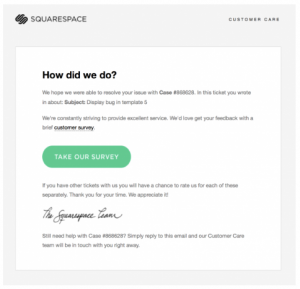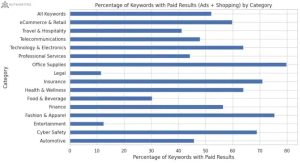 Whether you’re building an e-commerce website from scratch or improving one you’ve been depending on for a while, it’s crucial to make sure it at least has some basic components that make your online destination more user friendly and increase the likelihood that first-time visitors become loyal shoppers.
Whether you’re building an e-commerce website from scratch or improving one you’ve been depending on for a while, it’s crucial to make sure it at least has some basic components that make your online destination more user friendly and increase the likelihood that first-time visitors become loyal shoppers.
Straightforward Search Functionality
If people can’t find what they need on your website, they’ll likely give up without buying anything. Ensure your search box is easily visible and that people won’t have trouble figuring out how to use it. You might also include filters that allow people to search by product categories, brands or colors.
Make your search engine smart enough to know what users are looking for even if they make minor mistakes when typing keywords into the search box. A study conducted by the Baynard Institute found that 18 percent of websites do not offer useful results when people only type one character incorrectly in a product’s name.
Purchasing Incentives
Think back to the last impulse purchase you made online. What was one of the most pressing factors that caused you to go through with the purchase? Chances are, some sort of perk, such as free shipping, a percentage-off sale or a buy-one-get-one-free offer played a role in your ultimate decision to buy.
With that in mind, highlight all the purchasing incentives your website offers. Banners, pop-up windows and special website sections are some of the platforms you might use to promote things that might make people more willing to buy items.
A Page Devoted to Frequently Asked Questions
Maybe you’ve noticed customers often contact you to ask about how to care for a piece of clothing they just bought from you. Or perhaps they inquire about whether you can ship items to other countries, or if they can return unwanted items within a particular timeframe.
It’s a good idea to compile all those queries into a single, well-written, comprehensive section of your website. That way, shoppers can get the answers they need and may not have to take extra time to contact your company before making purchases.
Attractive, Dynamic Images
One of the potential downsides of online shopping is people can’t touch the items they’re thinking about buying. That’s one reason why it’s especially necessary to include images on your website that are excellent representations of the products being sold. Consider adding functionality that makes the images dynamic so users can click on certain sections of a picture to zoom in or look at an item from multiple perspectives.
A Secure Infrastructure
If customers have doubts about whether your website is set up to facilitate secure transactions, they’ll likely get scared off, especially since there have been so many high-profile merchants that have been victims of hacking who compromised customers’ payment information.
It’s smart to include an image or text in your website’s footer that explains the kind of security in place. You might also include a separate page that discusses the things your company does to keep personal details from prying eyes.
Mobile Capabilities
We live in a world where people are increasingly on the go, and that reality extends to representatives from your e-commerce team. That’s why it’s a good idea to integrate mobile solutions into your website so salespeople can fulfill orders, check inventory and monitor sales statistics from wherever they are. Those capabilities could make it so orders get sent out faster, keeping customers satisfied.
Besides giving access to e-commerce data to your employees that’s accessible on mobile devices, don’t overlook integrating responsive design principles into your e-commerce site. It’s becoming increasingly common for people to shop online via their phones, so your website should facilitate that desire.
Product Reviews
Customers want to know what to expect when buying your products. Reviews can serve as excellent resources for genuine, relatable information about the things you sell, including how long the items last, the way they fit, whether the materials were expected and if the prices seemed fair.
A survey of over 600 online shoppers revealed more than 77 percent of them admitted product reviews impacted their purchasing decisions. That statistic alone should be enough to help you see how valuable product reviews are, and why you should include them on your e-commerce site.
If you’re having trouble getting people to submit reviews on their own, see if they’d be more willing to give them in exchange for free items or discounts. Generally, people are happy to report their experiences with products, but they may need a little prodding first.
An Intuitive Layout
When an e-commerce site is too hard to navigate, people may get frustrated and decide they don’t want to buy things from your company after all. Spend some time thinking about the most practical and effective ways to build or improve your site layout. Drop-down menus can be especially convenient if you sell products from many categories and can’t fit all of them in vertical or horizontal orientations within your site.
A Quick Checkout Process
If it takes too long to get through the checkout segment of the online shopping process, you might find your e-commerce site has a high shopping cart abandonment rate. Let unregistered customers check out as guests and only make them provide the bare minimum as far as contact details.
Explain what users should do to log in if they’ve shopped at the site before, and provide a hassle-free way for them to retrieve their passwords if they’ve forgotten them. You might also decide it’s useful to include a progress bar at the top of the checkout page that indicates how many more steps a customer has to go through before they are finished.
Then, if a person is in a hurry while trying to make a purchase on a lunch break or in a similar time crunch, they’ll know whether it’s feasible to complete the transaction immediately or wait until later. At the completion of the checkout process, explain how users can track their orders, or get in touch with the company if they need to make changes before items are dispatched.
A “Contact Us” Page
Don’t make shoppers have to hunt too hard to figure out how to get in touch. Include all the necessary details on a prominent “Contact Us” page. Offer multiple contact methods if possible, and think about providing a way people can talk to company representatives through a live chat window.
You’ve just learned about 10 things that’ll make your e-commerce site handier for customers to use and make them excited about what you offer. Equipped with this new knowledge, it should be much easier to build or improve a site that helps you get ever closer to your e-commerce sales goals.
Keep in mind, it may take time to reach the kinds of traffic levels you hope for, especially if your site was poorly designed before or doesn’t have a strong online presence yet. Be patient and put some of the tips above into practice, and your efforts should pay off.
Digital & Social Articles on Business 2 Community(81)







